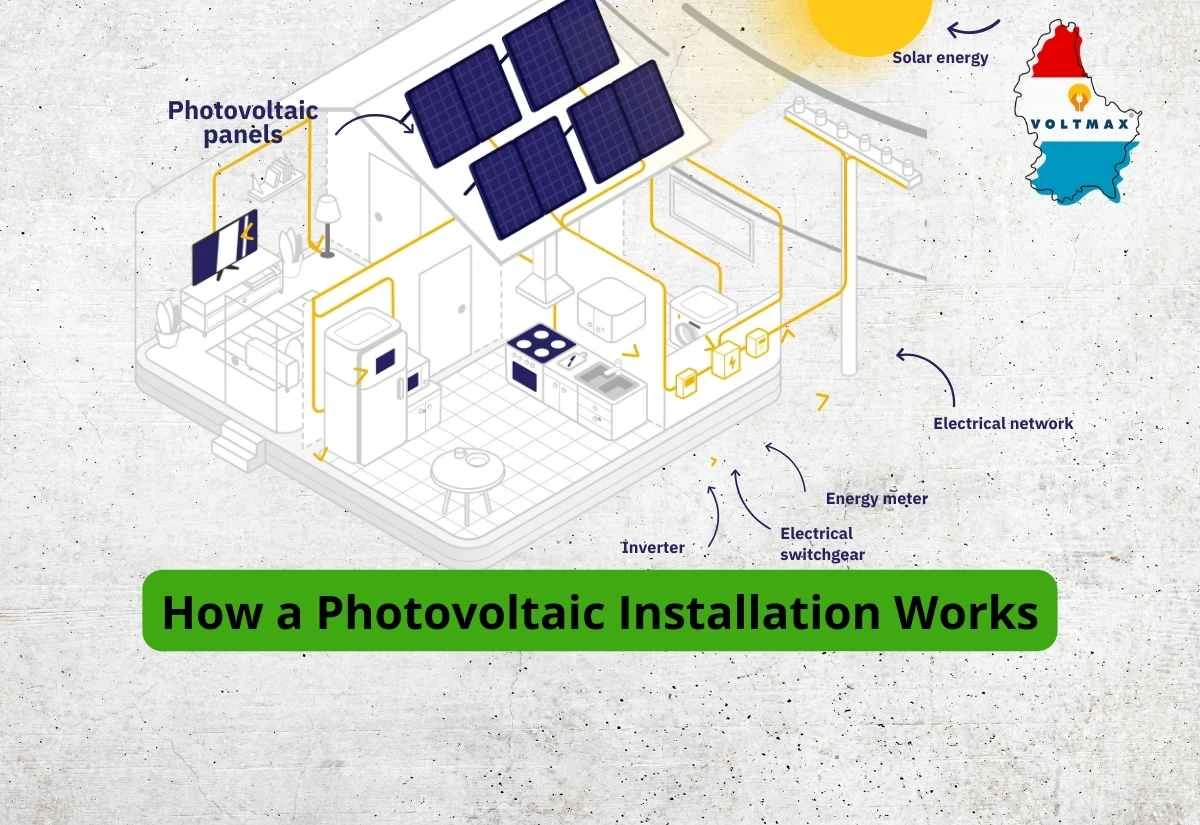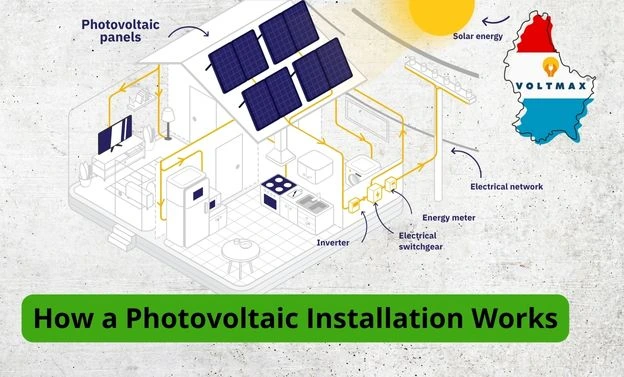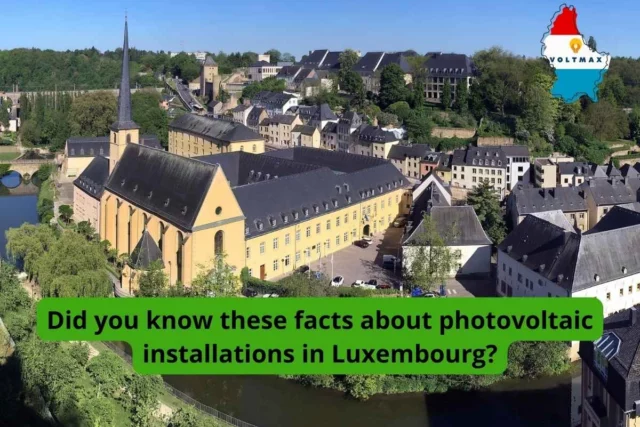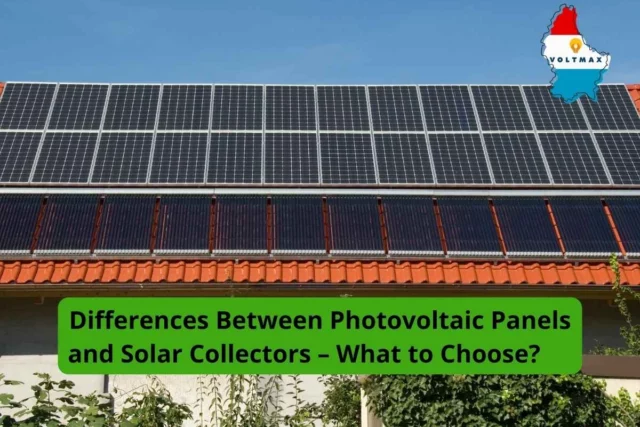
In summary, the article “How a Photovoltaic Installation Works” provides a comprehensive overview of the components, functioning, benefits, and future of photovoltaic installations. From the basic principles of how solar panels work to the integration with the power grid and the environmental impact, this article covers all the essential aspects that one needs to know about this sustainable and increasingly popular form of energy. Whether for residential or commercial use, photovoltaic systems represent a smart investment in a cleaner, more sustainable future.

Table of contents
ToggleIntroduction: Definition and Significance of Photovoltaic Installation
A photovoltaic installation, more commonly known as a solar power system, represents a significant leap in the way we harness energy. At its core, this technology involves converting sunlight, one of the most abundant and renewable sources of energy on our planet, into electrical power. This process is achieved through the use of solar panels, which contain photovoltaic cells that capture solar radiation and transform it into usable electricity.
The significance of photovoltaic installations extends far beyond their basic functionality. In an age where environmental concerns are paramount, these systems stand out as beacons of sustainability. They offer a clean, green alternative to traditional fossil-fuel-based energy sources, significantly reducing the carbon footprint of their users. By generating electricity without emitting greenhouse gases, they contribute markedly to the fight against climate change and the global push for a more sustainable future.
The versatility and scalability of photovoltaic systems also add to their appeal. They can be installed in a variety of settings, from small residential rooftops to large-scale solar farms, and in diverse geographic locations. This adaptability makes them suitable for both urban and rural areas, contributing to energy equity and accessibility.
Moreover, advancements in photovoltaic technology continue to enhance their efficiency and functionality. Innovations such as bifacial solar panels, which capture sunlight from both sides, and integrated battery storage systems are making solar power more efficient and reliable than ever before.
In conclusion, the role of photovoltaic installations in today’s world cannot be overstated. They represent a critical step toward a more sustainable and economically viable future, offering a solution that benefits both the planet and its inhabitants. As technology progresses and awareness of environmental issues grows, photovoltaic installations are poised to play an increasingly important role in global energy strategies.
History and Development of Photovoltaic Technology
Photovoltaics has its roots in the 19th century, but the dynamic development of this technology has occurred in recent decades. From simple panels to advanced systems, photovoltaics has come a long way.
Basic Components of a Photovoltaic Installation
Each photovoltaic installation consists of several key elements: solar panels, an inverter, a mounting system, and an energy meter. Each of these components plays a vital role in the efficient functioning of the entire system.
How Does a Solar Panel Work?
Solar panels work by converting sunlight into electricity through photovoltaic (PV) cells, commonly made from silicon. When sunlight hits these cells, it energizes electrons, creating an electric current. An electric field within the cell directs the electrons, leading to a flow of electricity. This current is initially direct current (DC) and is converted into alternating current (AC) by an inverter for use in homes and businesses. The efficiency of solar panels depends on the material and design of the PV cells. Advances in technology have led to different types of solar panels with varying efficiencies. Protective layers and anti-reflective coatings enhance durability and light absorption. The panels are typically framed in aluminum for structure and ease of installation.
Inverter: The Heart of the Installation
In photovoltaic systems, an inverter plays a crucial role by converting the direct current (DC) electricity generated by solar panels into alternating current (AC) electricity. This conversion is essential because AC is the standard type of electricity used in homes and businesses for operating appliances and electronics. The inverter ensures that the solar power generated is compatible with the electrical grid and can be either used immediately on-site or fed back into the grid. Additionally, modern inverters often come with additional functionalities such as system monitoring, maximizing energy production, and providing safety features like automatic shutdown in case of a power outage. Therefore, this is one of the points that you need to understand to learn how a photovoltaic installation works.
Installation and Mounting of the Photovoltaic System
The process of installing photovoltaics depends on many factors, including the choice of location and type of mounting system. Installation must be carried out by qualified professionals to ensure safety and efficiency of the system.
Integration with the Power Grid
Photovoltaic installations can be connected to the local power grid, allowing for the exchange of surplus energy on favorable terms. This is an important economic and technical aspect of photovoltaic systems.
Performance and Efficiency of the Installation
The efficiency of a photovoltaic installation depends on many factors, such as placement, panel type, and atmospheric conditions. Monitoring efficiency is key to optimizing system performance.
Maintenance and Upkeep of the System
For example regular inspections and proper maintenance are essential to maintain high efficiency and longevity of a photovoltaic installation. This includes cleaning the panels and also checking the technical condition of components.
Financial Benefits and Subsidies
Investing in photovoltaics offers significant financial benefits, including the possibility of obtaining subsidies and tax breaks. The return on investment depends on many factors, including local conditions and energy policy.
Environmental Impact and Sustainable Development
Photovoltaic installations contribute to reducing CO2 emissions and promote sustainable development. They represent an ecological alternative to traditional energy sources.
Trends and Future of Photovoltaics
The photovoltaic sector is one of the fastest-growing in the energy industry. Technological innovations and increasing interest in renewable energy sources are driving its development.
Use Cases and Case Studies
Photovoltaics find application in both private homes and industry. Case studies show the diversity of applications and benefits of this technology.
Challenges and Limitations of Photovoltaics
Despite many advantages, photovoltaics encounter various technical and regulatory challenges. The development of this technology requires further investment and political support.
Conclusion: Why Invest in Photovoltaics
In conclusion finally, photovoltaics offer many benefits, both economic and ecological. Knowing how a photovoltaic installation works allows you to better understand why choosing renewable energy is so important for the environment and for all of us. It is an investment in the future, shaping the way we think about and use energy.
FAQ
1. How long does it take to see a return on investment in photovoltaics? The return on investment for photovoltaic systems can vary depending on the size of the installation, local energy prices, and available subsidies. Typically, homeowners begin to see a return within a few years, making it a financially sound long-term investment.
2. Does a photovoltaic installation require special maintenance? Photovoltaic installations require minimal maintenance, primarily involving regular cleaning of the panels and periodic checks of the system components to ensure everything is functioning correctly. This low maintenance requirement adds to the appeal of solar energy.
3. What are the main benefits of owning a photovoltaic installation? The primary benefits include significant savings on electricity bills, also reducing one’s carbon footprint, contributing to environmental sustainability, and increasing property value. Additionally, solar energy provides a reliable source of power and independence from the traditional energy grid.
4. What are the latest trends in photovoltaic technology? Recent trends in photovoltaic technology include the development of more efficient and aesthetically pleasing solar panels, integration with smart home technology, and advancements in energy storage solutions like solar batteries. There is also a growing focus on making solar energy more accessible and affordable for a broader range of consumers.
Now that you know how a photovoltaic installation works, you can learn about available subsidies, please visit our “Funding” tab or the “KlimaBonus” website.
We encourage you to contact our advisor who will present all the possibilities and tailor the installation for you. Contact us by phone: +352 661 444 831 or fill out the Contact Form







